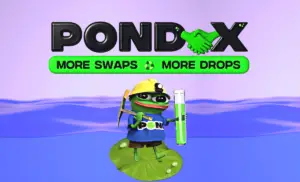Real-life horse racing was one of the most popular ways to make extra money. But its virtual counterpart, ZED Run, has started gaining more traction than traditional horse racing.
However, there are also risks and rewards associated with NFT horse racing, as with real-life horse racing.
What is NFT horse racing?
NFT horse racing is similar to horse racing in the real world, except easier. You simply purchase, breed, and enter your horse into races and collect real money for winning. The main difference is that it’s all digitized in the form of an NFT. The most popular NFT horse racing is ZED Run.
Let’s dive deeper into NFT horse racing and how it differs from real-world horse racing.
NFT horse racing vs real-world horse racing
The most significant differences between racing in the real world and ZED run are:
- Exclusivity and collectability
- Time and effort it takes to purchase, breed, and race your horse
- The cost to race your horse
These elements make NFT horse racing in the digital world drastically different from horse racing in real life.
Real-world horse racing
Horse racing in the real world is a very exclusive sport, primarily for monetary reasons.
While anybody with some money can bet on which horse will win, it’s a significant financial investment to train and enter your own horse into a race. There is a significant number of things required to raise a quality racehorse, including:
- A stable
- Food and treats
- Grooming
- Medical costs
- A trailer to transport the horse to races
The average total cost of raising a horse is about $3,876, and the cost only increases with the more horses you want to raise for racing.
You can purchase a racehorse that has already been bred and trained, but they cost at least $76,000 for one horse. Furthermore, it takes a considerable amount of time to properly train and care for a racehorse.
Racehorses need to be trained constantly for speed and endurance. This means training them daily, sometimes multiple times a day.
It’s also crucial for racehorse trainers to build a bond with their horses, primarily through grooming and riding.
Training a racehorse is a serious time commitment, and the amount of training the horse receives directly affects their performance level and how much you may earn racing your horse.
The fee to enter a race is usually about $3,000, but it can cost as much as $50,000. There also are travel fees to consider since you will likely have to transport your horse to races.
NFT horse racing
NFT horse racing allows you to buy digital racehorses as NFTs on the blockchain and race them against other NFT horses for real money.
In addition to purchasing various types of racehorses, you can also breed different horses. Furthermore, you can earn a profit from selling your racehorses to other collectors and investors.
Costs are significantly decreased, if not completely eliminated in NFT horse racing. You can purchase and sell digital horses in ZED Run for about $130, but some exclusive horses cost more than $45,000.
While that is a large amount of money, it’s typically still significantly less than what a real-life horse would cost. Race entry fees also cost anywhere from $2 to $15, which is even less than what it costs to enter real-life races.
The differences between real-life horse racing and horse racing in ZED run are clear, but there is one thing that makes them similar: you can make a significant sum of money from both NFT horse racing and real-life horse racing, but you also have to plan your moves carefully.
What is Zed Run NFT horse racing?
ZED RUN is a digital horse racing game in which users may own, breed, and race NFT racehorses with other players from all over the world any time of the day, seven days a week using web3 technology such as blockchain and cryptocurrency, to provide users with the same benefits as owning a purebred racehorse in real life.
The Zed Run platform monitors racehorse ownership using Smart Contracts and the Ethereum blockchain, as well as ZT ERC 721 NFTs. The smart contract stores all racehorse data (bloodline, genotype, gender, color, number of progeny, and race statistics).
Because all ZED RUN racehorses are assets that exist on the blockchain, they can be purchased or traded digitally with ownership guaranteed. Simply put, you are the single owner of a digital racehorse.
In order to buy and race your NFT horses via Zed Run, all you need is a computer that uses either Chrome, Firefox, or Brave, a web3 wallet such as Metamask, and some ETH.
How to buy an NFT racehorse for Zed Run
Buying an NFT racehorse is much easier than buying a real-life racehorse, it’s so easy that you can purchase your own NFT racehorse while sitting in your house.
Follow these 4 easy steps to purchase your very own NFT racehorse for Zed Run:
- Connect your MetaMask wallet to Zed.Run to create your stable
- Go to OpenSea
- Search for ZED RUN to check the verified collection (indicated by a blue tick) To locate the appropriate thoroughbred for your stable, sort racehorses by several criteria
- Click “Buy now” on the racehorse you wish to purchase
It’s really that easy. Once you have your own NFT racehorse, you can enter it into various races, breed your horse to make the ultimate racehorse, and even sell your horse for a profit.
How to race your Zed Run NFT horse
You can race your NFT horse on the Zed Run platform by following these 5 simple steps:
- Go to Zed.Run and login
- Go to the Racing tab and select Events
- You may view the available events by clicking on a Class and then viewing the options for distances and fees
- Once you select your race, choose a gate, and select your racehorse
- Once that race fills, it will move to the Next to Run tab (keep in mind that you can choose to only see your racehorses)
I recommended that you review the NFT horse racing FAQs before entering your NFT horse into any races.
How to make money with your ZED Run NFT Horse
The best way to make money in NFT horse racing is to breed quality horses and win races. The more races you win, the more money you will earn. Furthermore, you can sell horses that you’ve bred and earn money through secondary sales.
Every competition in Zed Run has a prize pool, which means that every eligible racehorse has a chance to win.
The Qualifying Period for The A-Shape Stakes will culminate in two tournament finals – Tournament A and Tournament B, each with its own prize fund.
- $73,733 USD in Tournament A
- $31,600 USD in Tournament B
| Round | Participants | Races | Prize Pool Allocation |
|---|---|---|---|
| Grand Finals | 12 | 1 | 13% |
| Finals | 36 | 3 | 19% |
| Semi-Finals | 144 | 12 | 23% |
| Quarter-Finals | 576 | 48 | 45% |
The Grand Final of both Tournament A and Tournament B consists of 6 races across different distances, where the racehorse with the most total points is crowned Champion.
Each race on the two tournament schedules represents a fraction of the total prize fund available, which is allocated to the first, second, and third place racehorses as follows:
- 1st Place — 60% of the prize pool
- 2nd Place — 25% of the prize pool
- 3rd Place — 15% of the prize pool
Additionally, you can earn money by selling the horses you have bred. If another player sees your horse and wants to own it, then they can purchase it for a set price on a secondary NFT marketplace if you list it for sale, and you will gain all the money from that sale.
For a complete breakdown of Zed Run’s tournament format, structures, and prize pools, please refer to their official FAQ page.
Final Thoughts
Horse racing in the digital world is slowly but surely starting to take over real-life horse racing. With fewer costs and equally high rewards, NFT horse racing is starting to make a name for itself in the world of virtual sports.




1 thought on “Everything You Need to Know About NFT Horse Racing with Zed Run”
Comments are closed.